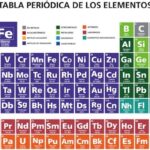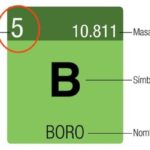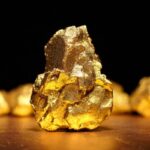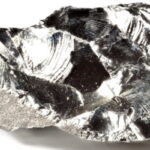We explain what nickel is, how it was discovered, how it is obtained, used and other properties. Also, allergy to nickel.
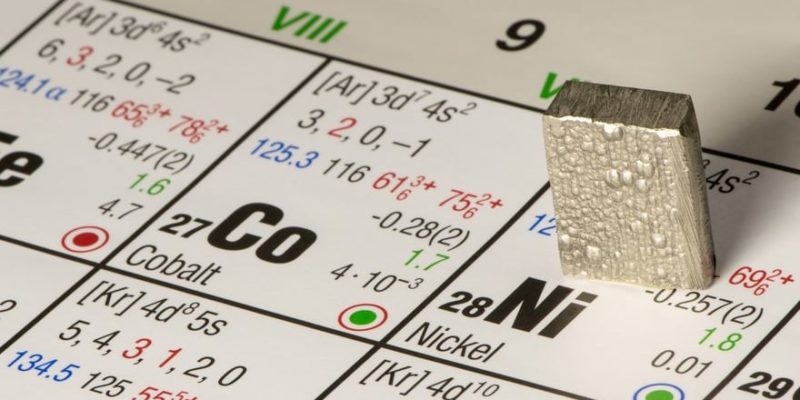
What is nickel?
Nickel is a metallic chemical element located in group 10 of the Periodic Table and represented by the symbol Neither. Its atomic number is 28 and it is part of the so-called “transition metals”, such as zinc, cadmium or mercury.
Along with copper, it is one of the metals best known and used by humanity throughout its history. Nickel It has five isotopes in nature and it is the lightest (58Ni) and also the most abundant (68%), and eighteen radioactive isotopes, of which 59Nor is it the one with the longest half-life (76,000 years). The half-life is the time required for half of a sample of radioactive nuclei to decay.
your name goes back to the German word Kupfernickel (whose origins are debated), which means “false copper.” Some explanations attribute it to the nickname that the miners gave to the devil (“old Nick” or Nicholas), because they assumed that nickel, similar in appearance to copper, was a form of deception for the greedy.
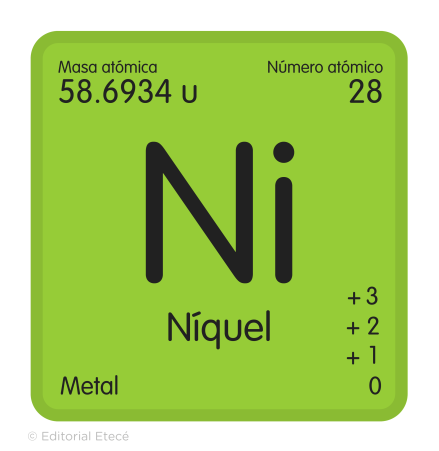

See also: Metallic link
Discovery of nickel

Nickel It was known to humanity since the 4th century BC. c. It is known that its discovery was simultaneous with that of copper, given that it is frequently found in minerals in which the latter metal is abundant.
For example, It was used in ancient Mesopotamia (Syria) where bronzes that have levels greater than 2% of nickel content were found. Many ancient Chinese manuscripts suggest that the “white copper” used in the East between 1700 and 1400 BC. C. was actually nothing but nickel.
Importance of nickel
Nickel was despised for a long time, nicknamed “false copper” and considered a useless or little valuable metal. Today that has changed. Although it is certainly not a precious metal, it is one of the most demanded in the industry for the manufacture of coins and as a material for alloys with iron, silver and other metals.
Furthermore, it is essential for microbial metabolism since 87% of hydrogenases, enzymes dedicated to the oxidation of hydrogen in microbes, contain high percentages of nickel as an active component.
Obtaining nickel

Nickel is the second most abundant metal on Earth (iron is the first). In fact, the core of our planet has very pure levels of both metals.
It is common to find it inside certain meteorites, alloyed with iron and forming the minerals kamacite and taenite. Furthermore, in combination with other metals it can be found in the minerals garnierite, millerite, pentlandite, nickelin and pyrrhotite.
The main nickel mines in the world are located in Canada, Cuba and Russia countries that satisfy 70% of the world's demand for this metal. Other important producers are Bolivia, Colombia, New Caledonia and the Dominican Republic.
Nickel Properties
Nickel It has a typical yellowish white color capable of being confused with copper (as in fact happened in the past). Many of its properties are similar to those of iron, a metal with which it shares an enormous density, as well as with osmium and iridium.
It's a good conductor of electricity and heat, ferromagnetic at room temperature. Since it is extremely ductile and malleable, it is rolled, polished and forged with great ease.
Its usual oxidation state is +2, although it has also been seen in other states (0, +1 and +3), and it is generally resistant to corrosion, without suffering the so-called “galleo” effect. At the same time, it is carcinogenic and highly toxic.
Uses of nickel

Nickel is widely used in metallurgy, in alloys of iron, silver and other metals which it protects against corrosion. In this way, stainless steel is obtained, among other superalloys, such as copper-nickel (“monel”), nickel-titanium (“nitinol-55”), nickel-iron (“mu-metal”) and alnico (aluminum-alloy). nickel-cobalt) from which magnets are made.
It is also widely used in the manufacture of coins and it is so common that in the United States the term is used nickel to refer to the smallest and lowest value coin.
It is also used in watchmaking and, in jewelry, it is a component of the so-called “white gold.” However, the use of nickel plating is inadvisable given the high level of toxicity of the metal. It is part of the manufacturing of rechargeable batteries. In addition, it is a common catalyst element in different chemical reactions.
Nickel allergy
Nickel It is a toxic and carcinogenic metal especially its vapors and nickel sulfate, as well as nickel carbonyl (Ni(CO)4), a common but extremely toxic gas. Likewise, there are many people sensitive to pure nickel, capable of showing allergies upon contact.
For this reason, the levels of this metal present in objects intended to come into contact with human skin are usually regulated nationally and internationally. It is considered 0.05 mg/cm3 as the maximum level of nickel to which a person can be exposed for eight hours a day and forty hours a week without suffering serious risks to their health.
References
- “Nickel” on Wikipedia.
- “Nickel” at LennTech.
- “Níquel” (video) in Aula24 Ciencias.
- “Nickel” in Enciclopedia.us.
- “Nickel (Chemical element)” in The Encyclopaedia Britannica.

